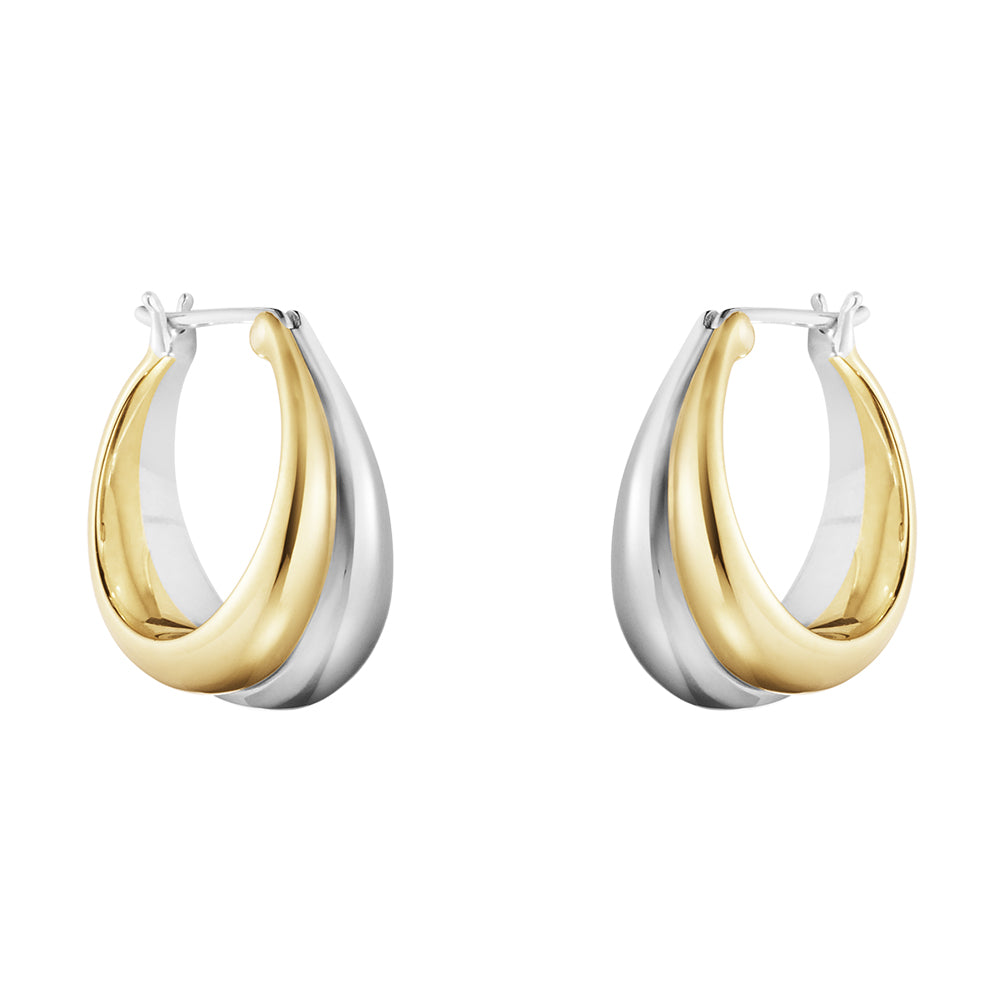
How to Clean Earrings Safely: A Guide for Mature Lady
Earrings are more than just accessories—they’re expressions of personal style, markers of life’s milestones, and often carry sentimental value. For mature women who value elegance, cleanliness and proper earring care are essential—not only to preserve beauty and luster but to prevent irritation or infection. This guide will walk you through everything you need to know about how to clean earrings safely and effectively at home.
Why Cleaning Earrings Matters More Than You Think
With time and regular wear, earrings accumulate dirt, skin oils, cosmetics, and even bacteria. This build-up can lead to:
Tarnishing of precious metals
Dull gemstones
Skin irritation or allergic reactions
Infections in pierced ears
For women over 40, our skin becomes more sensitive and healing slows down, making it even more important to ensure that anything we wear on or near our skin—especially in a pierced area—is hygienic.
How Often Should You Clean Your Earrings?
This depends on how often you wear them:
Daily wear earrings (like studs or hoops): clean every 1–2 weeks
Occasional wear or statement earrings: clean after each wear
Heirloom or vintage earrings: clean gently every few months, or professionally if needed
Materials and Tools You’ll Need
Before diving into the cleaning process, gather these items:
|
Item |
Use |
|
Mild dish soap |
Gentle cleaning base |
|
Warm water |
For soaking |
|
Soft toothbrush or makeup brush |
To scrub delicately |
|
Rubbing alcohol (70% or higher) |
Disinfection |
|
Hydrogen peroxide (optional) |
For disinfecting metals |
|
Microfiber cloth |
For drying |
|
Jewelry polishing cloth |
For shine and protection |

Step-by-Step Guide: General Cleaning for Most Earrings
Cleaning your earrings doesn’t have to be complicated, but doing it correctly can make a significant difference in both appearance and hygiene. Whether you wear elegant gold hoops, timeless pearl studs, or gemstone drops, this comprehensive cleaning method is suitable for most types of earrings made from gold, silver, platinum, and durable gemstones like diamonds, sapphires, or cubic zirconia.
Note: If your earrings are made of delicate materials like pearls, opals, or costume jewelry with glued components, refer to the “Special Care” section for material-specific advice.
Step 1: Wash Your Hands Thoroughly
Why it matters:
Your hands may carry bacteria, oils, or lotion residue. Starting with clean hands ensures you’re not transferring additional grime onto your earrings or into your pierced ears.
How to do it:
Use antibacterial soap and warm water.
Lather your hands for at least 20 seconds.
Dry with a clean towel or air-dry completely before touching your earrings.
Pro Tip: Trim your nails or clean under them, as grime tends to collect there and can transfer to jewelry.
Step 2: Prepare a Soapy Water Solution
Why it matters:
A gentle soap solution helps to break down accumulated oils, dust, and other particles without damaging the finish or setting of your earrings.
What you need:
A small ceramic or glass bowl (avoid plastic, which can scratch easily)
Mild, fragrance-free dish soap (avoid harsh detergents or soaps with moisturizing agents)
Warm (not hot) water
How to prepare:
Fill the bowl with 1 cup of warm water.
Add 3–5 drops of mild dish soap and stir to dissolve.
Step 3: Soak the Earrings
Why it matters:
Soaking loosens built-up debris, dried oils, and any residue from skin or cosmetics. It also softens any buildup around prongs or in crevices, making cleaning more effective.
How to do it:
Place your earrings in the bowl, ensuring they’re fully submerged.
Let them soak for 5 to 10 minutes. This is sufficient for everyday grime. For heavier buildup, let them soak up to 15 minutes, but no longer—especially if they contain glued stones.
Caution: Don’t soak antique or delicate earrings. Water may loosen the adhesive or compromise vintage metals.
Step 4: Gently Brush the Crevices
Why it matters:
A lot of grime hides in tiny crevices—behind the stone, under the setting, or around the post. Brushing helps dislodge dirt without damaging the metal or gems.
What you need:
A soft-bristle toothbrush (ideally a baby toothbrush or soft makeup brush)
Optional: a magnifying glass or bright light to inspect the details
How to brush:
Dip the brush into the soapy solution.
Hold the earring securely (use tweezers if it's small).
Gently scrub all surfaces: front, back, under the gemstone, the clasp, and especially the post.
Don’t apply too much pressure—let the bristles do the work.
Extra Tip: Use a wooden toothpick to gently remove stubborn debris stuck in grooves—never metal tools, which can scratch your jewelry.
Step 5: Rinse with Clean Water
Why it matters:
Leaving any soap residue behind can cause skin irritation or attract more dirt. Rinsing ensures your earrings are truly clean and safe to wear again.
How to do it:
Fill another clean bowl with lukewarm water, or run a gentle stream of water from the tap.
Rinse each earring individually, making sure to remove all traces of soap.
If using a sink, close the drain or place a fine-mesh strainer over it to prevent accidents.
Safety Tip: Hold small earrings over a soft towel or bowl, not over the sink, in case they slip from your hands.
Step 6: Disinfect the Posts
Why it matters:
Even after cleaning, earring posts—the part that goes through your ear—need extra disinfection. This step kills bacteria that could cause irritation or infection, especially if you wear earrings for long hours or have sensitive skin.
How to disinfect:
Use 70% isopropyl alcohol or hydrogen peroxide (either is effective).
Soak a cotton swab or cotton ball in the solution.
Gently wipe the post, backing, and any area that directly contacts your ear.
Let the earrings sit on a clean surface for a few minutes to allow the alcohol to evaporate.
Alternative: Use pre-soaked alcohol pads for convenience, especially when traveling.
Step 7: Dry Completely
Why it matters:
Moisture left in the crevices can lead to tarnish or bacteria growth. Proper drying also prevents water spots on polished metals or gemstones.
How to dry:
Pat dry gently using a soft microfiber or lint-free cloth.
Lay the earrings flat on a clean, dry towel and allow them to air-dry fully for at least 30 minutes.
For earrings with tiny parts or hollow backs, use a hair dryer on cool setting to remove water from hard-to-reach areas.
Bonus: Post-Cleaning Care
Once dry, polish with a jewelry cloth to restore shine and remove any remaining tarnish.
Store earrings in a dry, soft-lined container with separate compartments to prevent scratching.
If possible, use silica packets or anti-tarnish strips inside your jewelry box to reduce humidity.
Special Care for Specific Materials
Gold & Platinum
These metals are durable and tarnish-resistant. Follow the general cleaning steps above. For extra shine, use a polishing cloth specifically designed for gold.
Tip: Avoid using baking soda—it can be too abrasive.
Sterling Silver
Prone to tarnish, silver benefits from regular polishing. Use a silver-specific cleaner if your earrings are heavily tarnished.
Gemstone Earrings (Diamonds, Sapphires, etc.)
These stones can withstand soapy water but should not be soaked for too long if set with glue. Be gentle when brushing around prongs.
Pearls, Opals, and Other Soft Stones
Never soak these delicate stones. Instead:
Dip a clean cloth in soapy water.
Wipe the pearl gently.
Dry with a soft, clean cloth.
Store separately to avoid scratches.
⚠️ Warning: Avoid alcohol, peroxide, and ultrasonic cleaners.
Vintage or Heirloom Earrings
Avoid DIY cleaning unless you're certain of the materials. When in doubt, consult a jeweler.
How to Find a Professional Jewelry Cleaner Near You – Yelp

Tips for Storing Earrings After Cleaning
Store in a jewelry box with compartments to avoid tangling or scratching.
Use anti-tarnish strips for silver.
Avoid moist or humid environments, which can cause tarnish or mildew.
When to Replace or Repair Earrings
No matter how clean your earrings are, some signs mean it’s time to retire or repair them:
Bending or cracking of metal posts
Loose gemstones
Tarnish that won't clean off
Irritation even after cleaning
Final Thoughts: Your Earrings Deserve Care—So Do You
Caring for your earrings is a form of self-care. As mature women, we appreciate quality and legacy—many earrings in our collections carry deep personal meaning. By keeping them clean and cared for, you not only preserve their beauty but protect your skin and health.
Make earring cleaning a part of your self-care ritual, perhaps while sipping tea, listening to a podcast, or preparing for a special evening out. Your future self—and your ears—will thank you.
Share Your Tips
Do you have a favorite method or product for keeping your earrings sparkling clean? Share in the comments below—we’d love to hear from other mature women who know the value of timeless beauty.
FAQ: Frequently Asked Questions About Earring Cleaning
Q1: Can I use hydrogen peroxide on all types of earrings?
A: No. Hydrogen peroxide is safe for metals like gold, silver, and surgical steel, but it can damage soft or porous stones such as pearls, opals, and turquoise. For earrings with delicate or glued components, stick to mild soapy water and avoid soaking.
Q2: How do I clean earrings I can’t remove (like permanent hoops)?
A: Use a cotton swab dipped in rubbing alcohol or saline solution to clean around the area daily. If buildup persists, consult a professional piercer or jeweler for removal or deeper cleaning.
Q3: Is it safe to use alcohol wipes instead of liquid solutions?
A: Yes, alcohol wipes are a convenient way to disinfect earring posts, especially when traveling. However, they may not remove grime or buildup as thoroughly as a full clean involving soap and water.
Q4: How should I clean earrings if I have very sensitive ears?
A: Use hypoallergenic cleaners, avoid alcohol or peroxide, and rinse thoroughly to ensure no residue is left behind. Always dry completely, and consider wearing medical-grade or titanium earrings to minimize irritation.
Q5: Can ultrasonic cleaners damage my earrings?
A: Ultrasonic cleaners can be effective but are not safe for all types of earrings—especially vintage pieces, pearls, or soft stones. If in doubt, avoid using them or consult with a jeweler.
Q6: How do I know if my earrings are real gold or silver before cleaning?
A: Look for stamps (like 925 for silver or 14K for gold). If you're unsure, avoid harsh chemicals and test in an inconspicuous area or bring them to a jeweler for verification before cleaning.
Q7: What’s the best way to prevent tarnish after cleaning?
A: After drying thoroughly, store earrings in a dry, airtight container with anti-tarnish strips. Avoid leaving them in bathrooms or humid environments.
Q8: Can I clean clip-on earrings or costume jewelry the same way?
A: For costume jewelry or earrings with glued stones, avoid soaking. Instead, use a damp cloth with diluted soap and gently wipe. Test any cleaner on a small area first to avoid damaging finishes.









